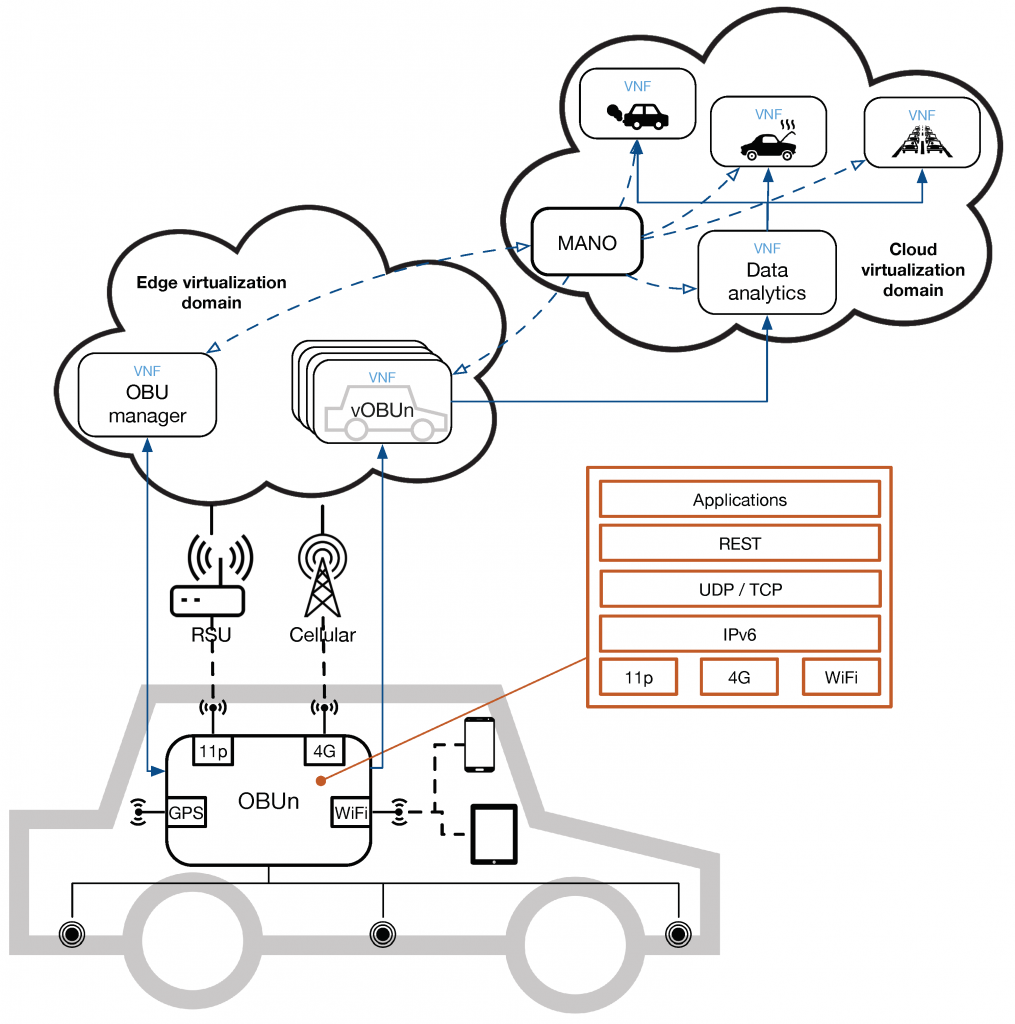Architecting edge for self-driving cars with OpenStack and ETSI Open Source MANO
 January 2019
January 2019
By Sagar Nangare, Principle Executive – Digital Marketing, Calsoft Inc.
The most awaited 5G use case just might be autonomous vehicles and the transportation revolution expected to follow in their wake. See how OSM addresses certain technical hurdles to make cars truly smart.
The most awaited 5G use case just might be autonomous vehicles and the transportation revolution expected to follow in their wake. The innovation is expected to bring new services like pollution monitoring, tracking and predictive diagnosis, congestion detection and smoother mobility through cities as well as more reliable infotainment.
Cloud architecture will make all of this possible, but there are certain technical hurdles to making cars truly smart.
A few of these obstacles include:
- Low latency requirements for simultaneous data transmission within vehicle on-board units (OBUs) and cloud or data centers.
- Faster processing of the raw data generated to produce insightful instructions to physical OBUs in vehicles.
- And an intermediate layer for holding a raw cache of data generated by multiple sensors build in vehicles for instant insight generating a quick response.
Researchers at Cartagena and Murcia universities in Spain tested a solution called “surrogates” to address these obstacles by virtualizing vehicle OBUs using OpenStack and ETSI Open Source Mano (OSM). The focus of their proof-of-concept is a multi-access edge computing (MEC) layer that acts as a middle layer between cloud and vehicle OBUs.
This solution virtualizes functionality of physical OBUs in form of virtual network functions (VNFs) which are hosted on the middle layer or edge of the network (roadside units, cellular base stations, WiFi access points, etc.) Data pre-processing tasks like analysis, pattern recognition and aggregation of raw data are carried out by these VNFs, which are in turn are managed by NFV based at edge and further pushed to cloud for high-volume global big data analysis. The processed insights are then accessed by OBUs deployed inside vehicles from vOBUs or a data-analytics module.
The computing resources or functionalities are taken out from physical OBUs and pushed to the edge layer with higher resource consumption power. That means that these VNFs are accessible by multiple physical OBUs deployed in-vehicle simultaneously. This results in reducing data latency and response information transmission by 50 percent from data centers to OBUs. Additionally, it reduces the consumption and frees up wireless network bandwidth required by scores of vehicles and multiple other types of devices in the network.

The proposed solutions require two NFV clouds: one as a central cloud and another as edge infrastructure. The PoC is built using OpenStack and ETSI Open Source Mano (OSM) to gather and process data from vehicle OBUs. OpenStack (version Pike) serves as a virtual infrastructure manager (VIM) for managing virtualized resources at both the infrastructures. OSM (version 4) is used at the central cloud as an orchestrator for VNFs. Edge infrastructure domain, which has MEC capabilities, consists of vOBU VNFs managed using OpenStack. The VNFs communicate with MANO, the OBU manager and the data analytics modules for their respective functions.
The OBU manager, itself a VNFs deployed at the edge virtualization domain, acts as an intermediate component for the physical OBU to their virtual counterparts place in the same domain. It communicates with OSM for vOBU related requirements like allocation, scaling and sharing a status report. Scaling and allocation of vOBU happen once a new request comes from existing OBUs and a new vehicle joins the network with access demands.
The monitoring module is deployed at the physical OBU and OpenStack environment at the edge domain, which acts as middleware for OBUs while communicating with vOBU. Grafana is used as a monitoring solution. The data analytics module serves data analysis requests made by VNFs at edge domains. VNFs communicate with data analytics modules to pursue analysis insights, either a new request for new insights or cached insights served to past requests.
The PoC was deployed tested under the 5GINFIRE project testbed setup with three experiments are carried out to evaluate objectives:
- Evaluate the platform operation when different cache success rates are obtained in the vOBU
- Study the ratio of request losses
- Analysis of system scalability and the duration of new-vehicle registration and obtaining vOBU instance
A validation has been carried out through the implementation of a monitoring service using Grafana and an Android app, demonstrating the good operation of the proposal, researchers conclude.
This proposed solution showcase how offloading device functions in the middle-layer edge domain can benefit not just vehicular services but also other use cases like industrial IoT, smart city operations, etc. Involvement of leading open infrastructure projects such as OpenStack and OSM as MANO suggest that such solutions are possible using open-source projects with the added benefit of controlling developing infrastructure costs. Along with OpenStack, OSM brings various benefits because it offers many robust solutions that support 5G cases at a larger scale.
This article is based on a research paper titled “Virtual OBUs to Foster 5G Vehicular Services” published in open access journal Electronics.
